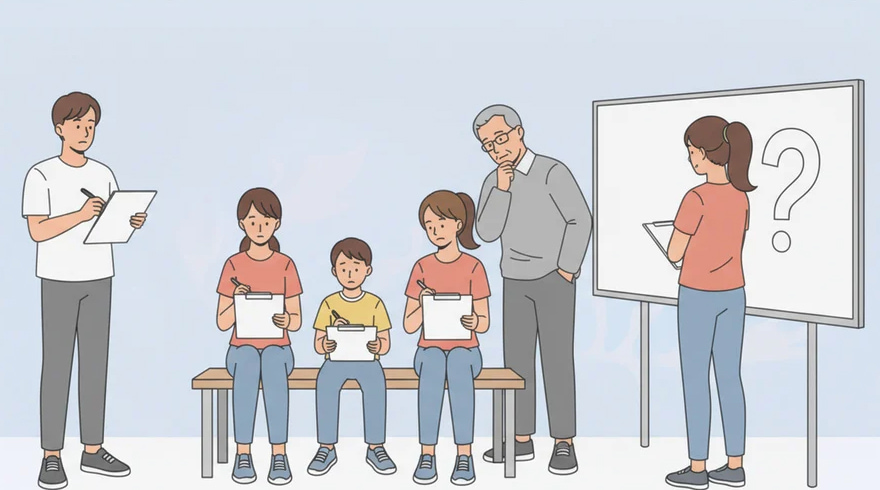The Definitive Guide to MI Assessments for Personalized Learning and Growth
- 11 November 2025

Understanding the Framework Behind MI Assessments
Howard Gardner’s perspective on human capability reframed how educators, coaches, and employers think about talent. Instead of assuming a single, uniform score captures ability, this viewpoint highlights distinct modalities such as linguistic, logical-mathematical, spatial, bodily-kinesthetic, musical, interpersonal, intrapersonal, and naturalistic strengths. By recognizing that people learn, create, and perform in different ways, the approach opens doors to instruction that is equitable, engaging, and practical. It also offers a vocabulary for discussing strengths without collapsing everyone into a narrow ranking, which helps reduce stigma and broaden opportunity.
As the framework moved from theory to practice, practitioners started using structured questionnaires, reflective prompts, and classroom observations to surface patterns that might otherwise remain hidden. Many educators rely on tools such as multiple intelligences test to translate theory into classroom practice. One well-known implementation is the Gardner multiple intelligences test, grounded in decades of cognitive research. Together, these resources empower learners to recognize genuine competencies while also reminding stakeholders that context, culture, and motivation shape how abilities show up day to day.
- It emphasizes diverse strengths instead of a single dimension.
- It supports differentiated instruction and individualized coaching.
- It encourages reflective goal-setting linked to real tasks.
- It complements, rather than replaces, other forms of assessment.
How Mi Assessments Are Designed, Delivered, and Scored
Well-constructed instruments draw on psychometrics, classroom practice, and cognitive science. Items often describe authentic scenarios and ask respondents to rate frequency or preference, reducing the temptation to “game” responses. Many use a blend of Likert-style formats with ipsative comparisons, balancing ease of use and nuanced interpretation. Reliability and validity are strengthened through piloting with diverse groups and through transparent scoring rubrics that educators can interpret without advanced statistics. Delivery has expanded from paper checklists to adaptive digital forms that provide instant feedback and practical next steps.
Some practitioners favor the concise Gardner multiple intelligence test, which emphasizes practical, real-world strengths. If cost is a concern, you can still find a reputable free multiple intelligence test through university centers and nonprofit initiatives. To help you see how results map to everyday activities, review the quick reference below and notice how each domain aligns with observable behaviors.
| Intelligence | Everyday Clues | Sample Activities |
|---|---|---|
| Linguistic | Loves wordplay, storytelling, and nuanced arguments | Debates, blogging, and copywriting |
| Logical-Mathematical | Enjoys patterns, puzzles, and structured problem-solving | Coding challenges, data analysis, and budgeting |
| Spatial | Thinks in images, maps concepts visually, notices design | Sketching, CAD modeling, and video editing |
| Bodily-Kinesthetic | Learns by doing, has strong coordination and timing | Prototyping, dance, athletics, lab work |
| Musical | Remembers melodies, detects rhythm and tone easily | Composing, sound design, instrument practice |
| Interpersonal | Reads cues well, facilitates groups, builds rapport | Mediation, mentoring, sales conversations |
| Intrapersonal | Reflective, self-motivated, sets purposeful goals | Journaling, mindfulness, career planning |
| Naturalistic | Notices ecosystems, categorizes patterns in nature | Gardening, field research, sustainability projects |
Good instruments also include clear guidance on interpreting profiles, common pitfalls to avoid, and tips for turning insight into action. They focus on growth and application, not labeling, and they encourage learners to revisit results as contexts shift over time.
Benefits for Learners, Educators, Teams, and Families
Mapping a strengths profile can energize learning because people see themselves accurately and feel invited to contribute. In classrooms, teachers redesign tasks to offer multiple entry points, leading to higher engagement and fewer bottlenecks. In organizations, managers allocate responsibilities in ways that leverage natural talent, which can boost morale and productivity. Families gain a shared language for supporting homework, hobbies, and long-term aspirations without forcing everyone down the same path. Over time, the approach nurtures confidence and mastery by aligning how people prefer to work with what they are asked to do.
Coaches often ask clients to test multiple intelligence after goal-setting to reveal hidden pathways to success. Students frequently appreciate a multiple intelligences test free option when exploring elective choices and extracurriculars. Benefits compound when results inform choices about study strategies, peer collaboration, and assessment formats that honor different ways of demonstrating knowledge. When people are invited to show what they know through diverse modalities, the quality and authenticity of their work often rise.
- Boosts motivation by aligning tasks with strengths.
- Improves collaboration by clarifying complementary roles.
- Reduces anxiety by offering more than one way to succeed.
- Supports equity by validating varied forms of excellence.
Selecting Trustworthy Instruments and Using Results Ethically
Choosing a reliable tool starts with source credibility, transparent methodology, and practical guidance. Look for instruments built by researchers, veteran educators, or reputable learning organizations. Avoid quizzes that oversimplify or that force a single label without nuance. Ensure that any platform you use protects privacy, explains scoring, and clarifies appropriate uses. Finally, keep the focus on growth by framing results as starting points for experimentation, not permanent limits or fixed identities.
Parents might look for a trustworthy multiple intelligence test for free before investing in tutoring or enrichment. For quick screening, a vetted multiple intelligence test for free can highlight dominant modalities in minutes. Ethical practice includes gaining consent, sharing results with sensitivity, and documenting how insights will inform instruction, coaching plans, or workplace development. A short checklist can help you keep standards high and learner dignity at the center.
- Verify authorship, norms, and intended use cases.
- Prefer tools with clear, actionable reporting.
- Protect data and respect confidentiality boundaries.
- Pair results with observation and performance evidence.
Interpreting Your Profile and Turning Insight Into Action
Reading a profile is most useful when you connect it to concrete decisions. Instead of stopping at a ranked list, ask how the results can improve study plans, project workflow, or team roles. Translate insights into small experiments: change note-taking strategies, redesign practice routines, or try new collaboration patterns. Reflect on outcomes and iterate, recognizing that growth comes from deliberate practice, not from a static label. Share findings with mentors who can help you design supportive challenges.
Scholars sometimes design a rigorous multiple intelligence theory test to examine reliability across age groups. Remote programs increasingly embed an online multiple intelligence test inside onboarding modules and orientation. After taking stock of your strengths, choose two or three habits to adjust and track progress for a few weeks. The goal is to build a portfolio of strategies that work for you in real contexts, from classrooms and studios to labs and meeting rooms.
- Pick one priority area and experiment with two techniques.
- Schedule reflection checkpoints and refine your approach.
- Ask for feedback tied to observable behaviors.
- Document wins to reinforce motivation and momentum.
Frequently Asked Questions
Is this approach the same as traditional IQ testing?
No, the focus here is on a broad pattern of abilities rather than a single score. It complements other assessments by highlighting how people learn and perform across varied contexts, especially when tasks are authentic and multifaceted.
What ages can benefit from these assessments?
Children, teens, and adults can all gain insights, provided that the items and examples are age-appropriate. Career centers compare several multiple intelligence tests to align majors with strengths and interests. For younger learners, adults should guide interpretation and connect results to supportive experiences.
How accurate are the results, and should they change over time?
Accuracy depends on instrument quality, honest responses, and the fit between items and the learner’s context. Results can evolve as people practice skills, encounter new challenges, or receive targeted coaching, so periodic check-ins are recommended.
Can schools or teams rely on a single instrument for big decisions?
It is better to use multiple data sources, including performance tasks, portfolios, and observation. Many school districts still reference the classic multiple intelligence test by Gardner when building personalized learning plans. Combining tools creates a richer, fairer picture than any single snapshot.
How long does it take, and what preparation is needed?
Most instruments require 10–30 minutes, though deeper versions may take longer. Respondents simply need a quiet environment and a willingness to answer candidly, with no special preparation beyond everyday self-reflection.
Educators and learners who treat this process as an ongoing conversation, supported by evidence, reflection, and purposeful experimentation, tend to unlock more meaningful growth than those who chase labels or quick fixes.
Latest News
-
![Free Multiple Intelligence Testing: A Complete Guide to Smarter Learning Decisions]() Free Multiple Intelligence Testing: A Complete Guide to Smarter Learning Decisions Find Your Learning Style With Test Get Started Understanding Multiple Intelligences in Modern Learning People learn in wonderfully different ways, and recognizing that diversity helps educators, students, and professionals make better choices. The multiple intelligences fr...
Free Multiple Intelligence Testing: A Complete Guide to Smarter Learning Decisions Find Your Learning Style With Test Get Started Understanding Multiple Intelligences in Modern Learning People learn in wonderfully different ways, and recognizing that diversity helps educators, students, and professionals make better choices. The multiple intelligences fr... - 10 November, 2025
-
![Kolb’s Experiential Learning: A Complete Guide to Styles, Tools, and Benefits]() Kolb’s Experiential Learning: A Complete Guide to Styles, Tools, and Benefits Find Your Learning Style With Test Get Started Foundations of Experiential Learning and Why Styles Matter Experiential learning explains how people transform experience into knowledge by cycling through doing, reflecting, conceptualizing, and experimenting. Rooted in cogni...
Kolb’s Experiential Learning: A Complete Guide to Styles, Tools, and Benefits Find Your Learning Style With Test Get Started Foundations of Experiential Learning and Why Styles Matter Experiential learning explains how people transform experience into knowledge by cycling through doing, reflecting, conceptualizing, and experimenting. Rooted in cogni... - 7 November, 2025
-
![The Complete Guide to Mapping Your Intelligence and Learning Profile]() The Complete Guide to Mapping Your Intelligence and Learning Profile Find Your Learning Style With Test Get Started What Intelligence Profiling Really Measures Human capability is multidimensional, spanning reasoning, creativity, memory, attention, social acuity, and practical problem solving. Any credible assessment seeks to illuminate how...
The Complete Guide to Mapping Your Intelligence and Learning Profile Find Your Learning Style With Test Get Started What Intelligence Profiling Really Measures Human capability is multidimensional, spanning reasoning, creativity, memory, attention, social acuity, and practical problem solving. Any credible assessment seeks to illuminate how... - 6 November, 2025



